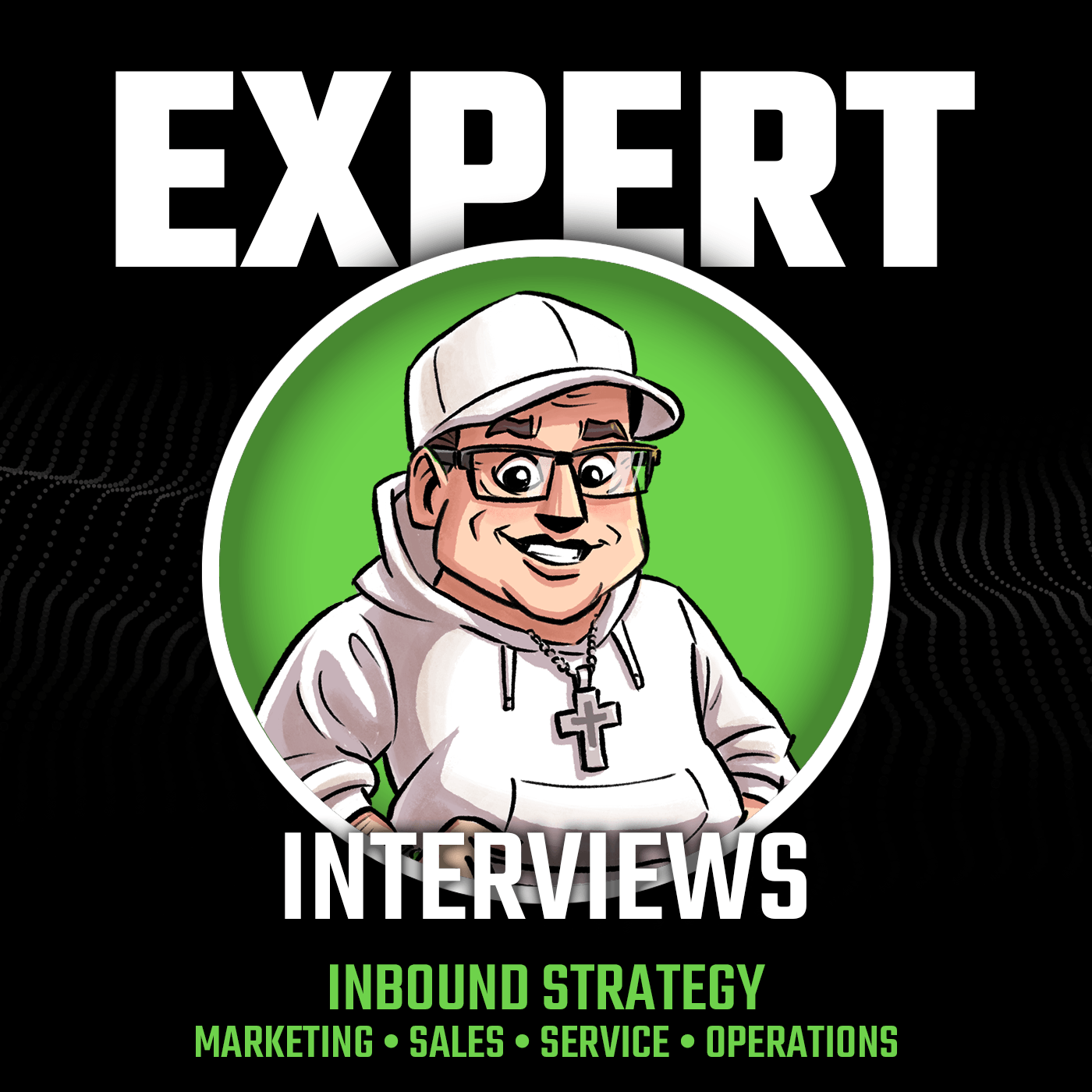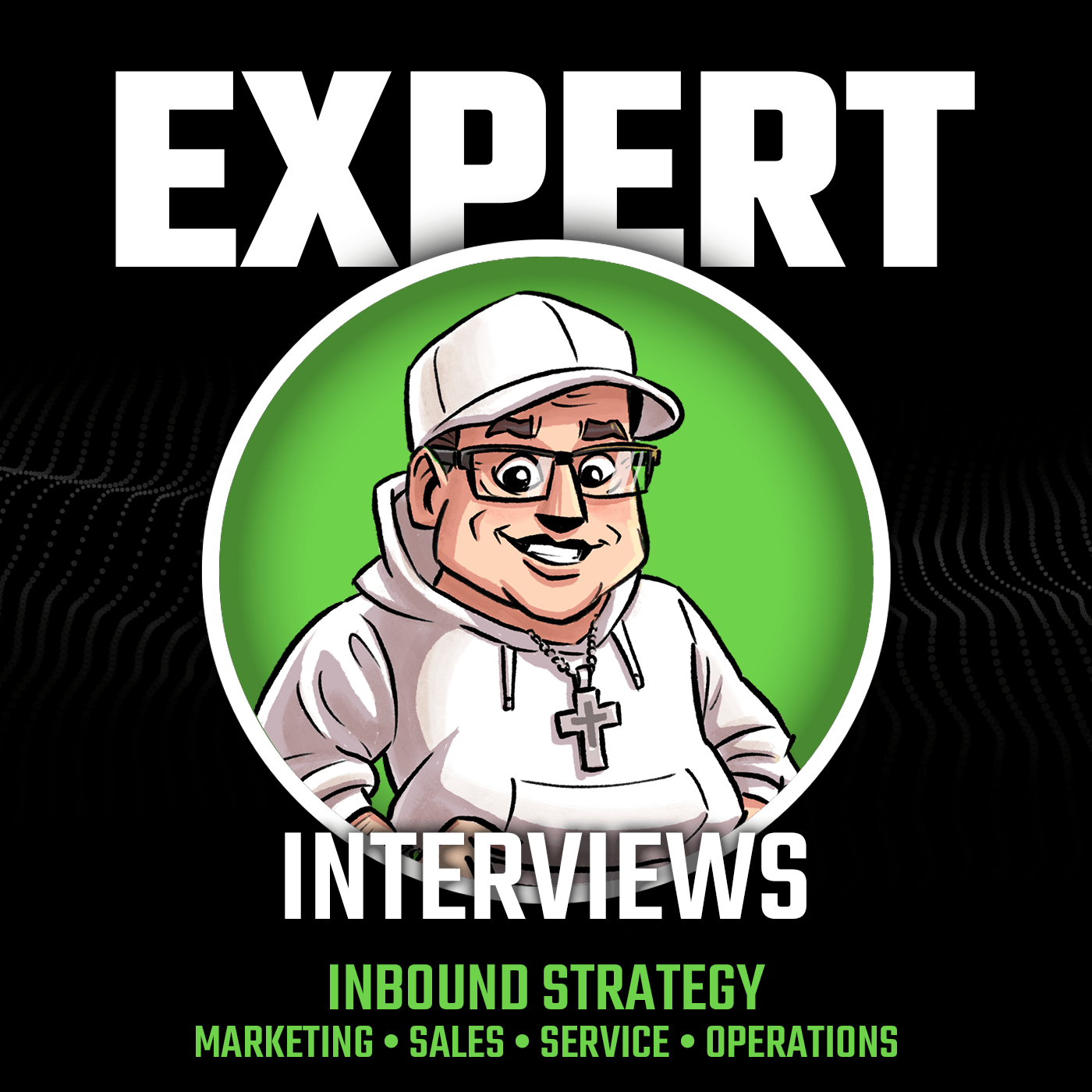
Sidekick Strategies Expert Interviews
BusinessMarketing18 episodes
Welcome to Sidekick Strategies, Expert Interviews, your premier podcast for mastering inbound strategies. Whether you're a marketer, sales professional, service expert, Operations Ninja, or business owner using HubSpot, this is the place for you! Every week, we bring on a new expert to share the essential tips, tricks, mindsets, and best practices your business needs to reach its full potential. Ready to transform your approach with cutting-edge insights? Let's dive into the world of inbound strategies with this week's expert!
Latest episode
All Episodes

HubSpot Image Optimizer App Pixel Compress with Franco Valentino and Kieran Allen
26 min 41 sec
Franco Valentino and Kieran Allen discuss Pixel Compress, an app that optimizes images in HubSpot portals. They explain that image compression is crucial for improving website speed and user experience. Pixel Compress automatically optimizes images when they are uploaded and can also optimize historical images. The app supports multiple image formats and ensures that the links to the content are not broken. It saves time and labor costs for teams, improves website trust and SEO, and provides significant space savings. The cost of Pixel Compress is $30 per month.
Takeaways: Pixel Compress is an app that optimizes images in HubSpot portals, improving website speed and user experience.
The app automatically optimizes images when they are uploaded and can also optimize historical images. Pixel Compress supports multiple image formats and ensures that the links to the content are not broken.
Using Pixel Compress saves time and labor costs, improves website trust and SEO, and provides significant space savings.
The cost of Pixel Compress is $30 per month.
Chapters
00:00: Introduction and Background
07:11: Major Hurdle and Benefits of Pixel Compress
13:29: Importance of Pixel Compress for Teams
24:40: Safeguards and BackupsPlay episode
View details

Unlock the Secrets of HubSpot Reporting: Expert Insights with Nakul Kadaba
42 min 53 sec
In this episode, George B. Thomas interviews Nakul Kadaba, a data expert from HubSpot, about the importance of reporting in HubSpot and how it can impact decision-making processes. They discuss the challenges and misconceptions users face when working with HubSpot reporting, as well as the foundational steps for leveraging HubSpot's reporting capabilities. They also dive into advanced reporting features and the significance of custom reports in HubSpot.
In this conversation, Nakul Kadaba shares insights and strategies for effective HubSpot reporting. The key themes covered include simplifying data visualization, adopting a growth mindset, overcoming challenges in HubSpot reporting, integrating data from various sources, and resources for deepening understanding. The main takeaway is to keep reporting simple and organized, using it as a tool to convey effective messages and identify areas for action.
Takeaways: Reporting is a critical component for businesses using HubSpot as it helps organize data and answer questions about the business.
Understanding gaps in data collection is important for gaining a comprehensive understanding of the organization. HubSpot's default properties and canned reports provide a good starting point for leveraging reporting capabilities. Custom reports in HubSpot allow users to customize their visualization and align it with their organizational model.
Chapters
00:00: Introduction and Guest Introduction
00:30: Importance of Reporting in HubSpot
07:07: Foundational Steps for Leveraging HubSpot's Reporting Capabilities
10:00: Advanced Reporting Features in HubSpot
25:04: Simplifying Data Visualization
27:32: Mindsets for Maximizing Value
29:54: Adopting a Growth Mindset
35:13: Overcoming Challenges in HubSpot Reporting
37:16: Integrating Data from Various Sources
43:28: Resources for Deepening Understanding
46:04: Key Takeaway: Keep Reporting SimplePlay episode
View details

Proactive, Post-Sale Order Management with HubSpot with Chris Carolan
46 min 50 sec
In this conversation, George B. Thomas and Chris Carolan discuss the challenges businesses face with current customer order management systems and how integrating CRM systems with custom objects can improve the post-sale order management process. They emphasize the importance of creating proactive and self-service experiences for customers, especially in the B2B space.
They also explore the limitations of traditional line items for order management and the benefits of modernized growth strategies in meeting the evolving expectations of industrial and manufacturing customers. The conversation concludes with a demo of using HubSpot to manage customer orders. This conversation explores the use of custom objects in HubSpot to enhance the customer experience and streamline post-sales processes. The discussion covers topics such as managing parent and child companies, handling temporary information, and creating custom objects for complex order processes.
The conversation also highlights the use of a customer portal in HubSpot CMS to provide customers with access to order details, proof of delivery, and the ability to reorder products. The importance of transparency and trust in building strong customer relationships is emphasized throughout the conversation.
Takeaways: Creating proactive and self-service experiences for customers is crucial in the B2B space. Integrating CRM systems with custom objects can improve the post-sale order management process. Traditional line items are insufficient for managing orders after the sale. Modernized growth strategies that incorporate sales, marketing, and service teams can meet the evolving expectations of industrial and manufacturing customers. Custom objects in HubSpot can be used to enhance the customer experience and streamline post-sales processes.
Managing parent and child companies can be made easier with custom objects in HubSpot. Temporary information can be handled efficiently without cluttering the system by using custom objects. A customer portal in HubSpot CMS allows customers to access order details, proof of delivery, and reorder products.
Chapters
00:00: Introduction
00:33: Chris's Background and Challenges in Customer Order Management Systems
09:54: Importance of a Proactive Post-Sale Management Approach
12:59: Integrating CRM Systems with Custom Objects
16:26: Limitations of Traditional Line Items for Order Management
23:29: Benefits of Modernized Growth Strategies in Industrial and Manufacturing
26:13: Meeting Evolving Expectations of Industrial and Manufacturing Customers
31:10: Demo: Using HubSpot to Manage Customer Orders
31:18: Introduction to Customer Platform and Custom Objects
32:07: Enhancing the Customer Experience with Custom Objects
33:31: Improving Post-Sales Processes
34:28: Managing Parent and Child Companies
35:26: Handling Temporary Information
36:02: Custom Objects for Complex Order Processes
37:18: Customer Portal for Order Tracking
38:14: Creating a Membership Portal in HubSpot CMS
38:44: Viewing Order Details in the Customer Portal
39:42: Proof of Delivery in the Customer Portal
40:49: Adding Custom Information to Orders
42:45: Using Pipelines in Custom Objects
44:06: Custom Objects for Different Product Types
45:25: Customizing the Customer Portal
46:46: Easily Adding Properties in HubSpot CRM
47:19: Reordering Products in the Customer Portal
50:58: Providing Certainty to Customers
52:20: The Importance of Customer Experience
53:26: Contacting Chris CarolanPlay episode
View details

Creating & Understanding a People-first GTM Model with Mark Kilens
46 min 58 sec
Mark Killens discusses the principles of the People-First GTM model and its significance in today's marketing landscape. He emphasizes the importance of storytelling and building relationships in this approach. Mark also explores the challenges marketers face when implementing a People-First GTM strategy and provides insights on overcoming them. He delves into the role of community-led growth, partner-led growth, and events in driving engagement and fostering deeper relationships. Additionally, Mark highlights the key components of an effective content-led growth strategy. This conversation explores the concept of a people-first go-to-market (GTM) model and its various components.
The discussion covers the power of connection at events, the mistake of overloading content at in-person events, the focus on content in online events, using events to strategically grow a business, integrating product-led growth in the GTM model, metrics and KPIs for measuring success, scaling the people-first GTM model, future trends in the people-first GTM model, and the importance of putting people first in business.
Takeaways: The People-First GTM model emphasizes the importance of putting people at the center of marketing strategies and building relationships. Storytelling is paramount in the People-First GTM model as it helps to engage, educate, and motivate audiences.
Implementing a People-First GTM strategy requires a shift in mindset and belief system, as well as addressing the challenges faced by buyers in today's attention economy. Community-led growth, partner-led growth, and events play crucial roles in fostering engagement, building trust, and creating value in the People-First GTM model.
An effective content-led growth strategy focuses on understanding the target audience, creating valuable content, and leveraging partnerships to drive growth. Events should prioritize creating connections and meaningful conversations rather than overwhelming attendees with excessive content.
In-person events should be single track with less but higher-quality content, focusing on building connections. Online events should prioritize content while still creating opportunities for community building and conversations.
Events can be strategically used to grow a business by leveraging relationships, partnerships, and community building.
Product-led growth can be integrated into the GTM model by aligning free offerings with the product or service being sold.
Metrics and KPIs for measuring success in the people-first GTM model vary depending on the specific growth strategy being employed. The people-first GTM model can be scaled by focusing on strengths, resonating with the target audience, and gradually incorporating different growth strategies.
Future trends in the people-first GTM model include the intersection of artificial intelligence and human intelligence, leading to new channels, products, and content formats. The key takeaway is to spend more time understanding and connecting with customers, using their language and building genuine relationships. To connect with Mark Kilens and learn more about the people-first GTM model, visit ClubPF.co and explore the free and premium membership options.
Chapters
00:00: Introduction to Mark Killens
02:56: The Core Principles of People-First GTM Model
05:56: Challenges in Implementing a People-First GTM Strategy
09:03: The Importance of Storytelling in People-First GTM Model
11:59: Community-Led Growth in the People-First GTM Model
15:06: Partner-Led Growth in the People-First GTM Model
20:57: Effective Content-Led Growth Strategy
28:47: The Power of Connection at Events
29:48: The Mistake of Overloading Content at In-Person Events
30:30: The Focus on Content in Online Events
31:31: Using Events to Strategically Grow Your Business
32:39: Integrating Product-Led Growth in the GTM Model
33:27: Metrics and KPIs for Measuring Success in the People-First GTM Model
36:44: Scaling the People-First GTM Model
45:44: Future Trends in the People-First GTM Model
48:47: The Importance of Putting People First in Business
50:12: Connecting with Mark KilensPlay episode
View details

Prospect to Customer, The Art of Journey Mapping with Tasha Dal Bianco
38 min 29 sec
In this episode, George B. Thomas and Tasha discuss the importance of journey mapping and how to effectively manage life cycle stages, lead status, and deal stages in HubSpot. They cover common mistakes to avoid, best practices for nurturing leads, and insights gained from lead status and life cycle stage data. Tasha shares success stories of businesses utilizing these features in HubSpot to map the customer journey. She also provides resources and tools for mastering journey mapping and offers actionable steps for listeners to take.
Takeaways: Journey mapping is an essential business operation that involves sales, marketing, and other teams. Segment and nurture leads based on lead status and life cycle stage using lists and targeted content.
Customize deal stages in HubSpot to match your unique sales process.
Utilize HubSpot Academy for comprehensive training and resources on journey mapping. Take action by conducting a customer journey mapping workshop, assigning an owner, and breaking down the process into manageable steps.
Chapters
00:00: Introduction
02:38: Explaining Life Cycle Stages and Lead Status
04:44: Common Mistakes in Managing Lifecycle Stages
06:44: Nurturing Leads through Life Cycle Stages
08:52: Explaining Lead Status Property
11:02: Managing and Updating Lead Status in HubSpot
13:02: Insights from Lead Status and Life Cycle Stage
15:28: Explaining Pipelines and Deal Stages
16:53: Customizing Deal Stages to Match Sales Process
20:02 :How Life Cycle Stages, Lead Status, and Deal Stages Work Together
21:24: Mindsets for Effective Journey Mapping
25:18: Challenges in Managing Journey Mapping
28:38: Segmenting and Nurturing Leads based on Lead Status and Life Cycle Stage
31:17: Success Stories of Utilizing HubSpot Features for Journey Mapping
34:57: Recommended Resources and Tools
36:56: Action Steps to Take
39:34: Key Takeaway
40:17: Connect with TashaPlay episode
View details
More episodes
